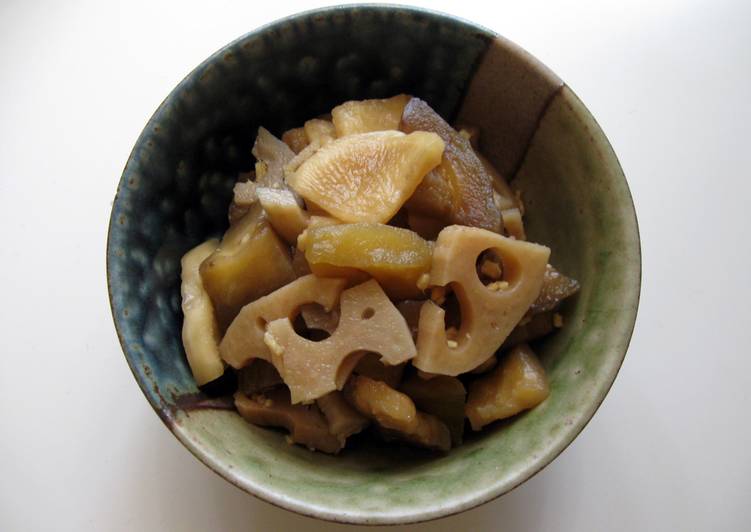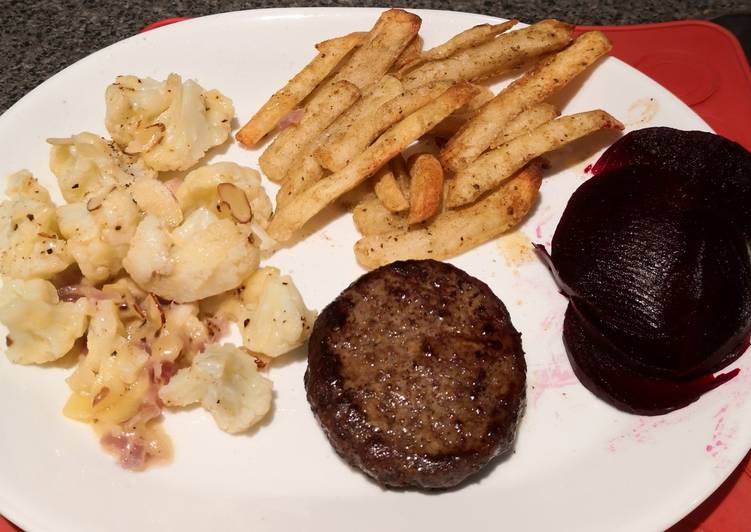
Hey everyone, it’s Brad, welcome to our recipe page. Today, we’re going to make a special dish, ‘fukujinduke’ pickles. One of my favorites. For mine, I am going to make it a little bit unique. This is gonna smell and look delicious.
Fukujinzuke (福神漬) is a popular relish for Japanese curry. It includes daikon, eggplant, lotus root, cucumber and other vegetables that are finely chopped, then pickled in a soy sauce base liquid. Fukujinzuke is made of daikon and other vegetables that are marinated in sweet soy sauce with a touch of sourness.
‘Fukujinduke’ Pickles is one of the most well liked of recent trending foods on earth. It is enjoyed by millions daily. It is simple, it’s quick, it tastes delicious. They are nice and they look wonderful. ‘Fukujinduke’ Pickles is something that I’ve loved my whole life.
To get started with this recipe, we have to prepare a few ingredients. You can cook ‘fukujinduke’ pickles using 10 ingredients and 7 steps. Here is how you cook it.
The ingredients needed to make ‘Fukujinduke’ Pickles:
- Take Daikon slices
- Prepare Eggplant slices
- Prepare Lotus Root (Renkon) slices *read ‘Method 4’ for how to prepare
- Make ready Salt
- Get small piece Ginger *finely chopped
- Take Kombu
- Take <Marinade>
- Take Soy Sauce
- Take Sugar
- Make ready Rice Vinegar
Fukujinzuke is a type of tsukemono, or Japanese-style pickle. The store bought variety is usually an assortment of daikon, eggplant, cucumber and lotus root, depending on the brand. Japanese pickles—known collectively as tsukemono—can easily go Fukujinzuke literally translates to "lucky god pickles," which is a reference to a Japanese myth about the seven gods of fortune. "Fukujinzuke (福神漬) is one of the most popular kinds of pickles in Japanese cuisine, commonly used as a relish for Japanese curry. In fukujinzuke, vegetables including daikon, eggplant.
Steps to make ‘Fukujinduke’ Pickles:
- Keep skin of Daikon for crunchy texture, but Eggplant skin needs to be removed, otherwise you will have yucky coloured pickles!!! Cut lengthways into 2-3cm in diameter sticks, then cut them into 4-5mm thin slices.
- Place Daikon and Eggplant slices in a bowl, add Salt, mix well, then set aside for 1 hour OR overnight in the fridge if possible. Plenty of water should come out. Drain well and squeeze to remove excess salty water.
- Combine all the marinade ingredients in a small bowl. Heat in the microwave so that Sugar will dissolve well.
- Lotus Root needs to be blanched. Remove skin, clean, cut lengthways into 2-3cm in diameter sticks, then cut them into 4-5mm thin slices. Blanch in the boiling salted water with 1-2 teaspoons Rice Vinegar for 2-3 minutes, then drain well.
- Place all vegetables, finely chopped Ginger and Kombu in a right size jar or container. I have found a ziplock bag is the easiest option.
- Remove the air, so that the vegetable pieces can stay in this minimal amount of marinade. Marinate in fridge for 1-2 days before you enjoy. (*This time I doubled the amount.)
- *Mix with Macadamia Nuts: Crunchy ‘Fukujinzuke’ and crunchy Roasted Macadamia Nuts go well together.
Finn Fukujinzukejapanese Pickles arkivbilder i HD og millioner av andre royaltyfrie arkivbilder, illustrasjoner og vektorer i Fukujinzuke/Japanese pickles. s. Pickles are an indispensable part of a traditional Japanese meal. Whether you are having fukujinzuke with your curry, a pickled plum in your bento lunch or some ginger with your sushi, pickles are the. The Japanese name for these pickles means "lucky god pickles." This refers to a When making fukujinzuke, you can use whatever vegetables you like. Salt pickles, or shiozuke, are the simplest and most common types of pickles.
So that is going to wrap it up with this exceptional food ‘fukujinduke’ pickles recipe. Thank you very much for reading. I’m sure that you will make this at home. There’s gonna be interesting food at home recipes coming up. Remember to bookmark this page on your browser, and share it to your family, colleague and friends. Thanks again for reading. Go on get cooking!

